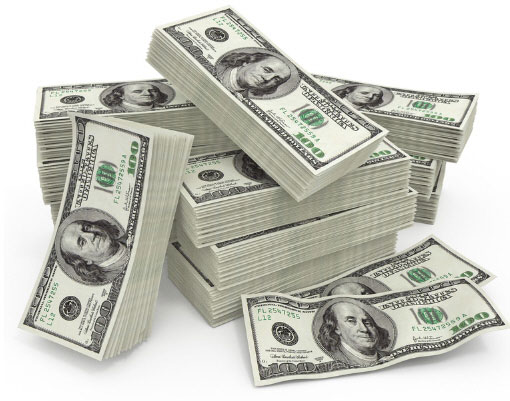The History of Paper Money in the United States and the World
December 2, 2011
The history of paper money in the United States can be studied under Numismatics. It races back to start of human civilization.
The Beginning
Before money as in coins or notes, as we use now had come into use, people followed the barter system. It is, in fact, the earliest form used by people to buy or sell anything. So you must be wondering as to what exactly is this system? Well, the basic concept of barter is extremely simple. The people during those times bought a particular thing in exchange of his personal goods or sold it following the same system.
So what exactly did they use to buy or sell a particular good that they wanted to have for themselves? The most popular form of barter that was used as livestock. Ox, cows, goats are some of the popular livestock that had been used under this system. Then as agriculture developed and became popular, the crops were used by the people as barter. The other form that was practiced was exchanging of raw materials for manufactured items. The raw materials in this question are minerals, grains etc and the manufactured goods are items like pottery, glassware, fish-hooks, harpoons etc.
Introduction of Coins
The next piece of item that came into use as a medium of buying or selling products is shells. This system was first introduced in China around the year 1200 B.C. Cowry shells started to be used and this system continued for a long time. Throughout the history of paper money, cowry shells continued to be in practice until the middle of the present century.
Around 1000 B.C, with the finishing of the Stone Age, the use of metals as a form of currency became prevalent. These metals even in the form of knives and spades were used as a form of currency in some parts of the world. The Chinese coins that were made of base metals had a very interesting structure. They had holes in between. That was done so that the coins could be chained together.
The earliest real form of coins can, however, be traced back to 500B.C when silver coins came into use. They were very similar to what we understand by coins today. They had impregnations of gods and goddesses, emperors and kings on their body. They were first used in Turkey; Lydia as it was called during those times. Gradually these coins were adopted across the world. The difference these coins had with the Chinese coins was that these coins were not made from base metals. Instead, valuable metals like gold, silver, and bronze were used to make them.
First Currency
The next form of currency that was used is leather currency. It has been discovered that around the year 118 B.C banknotes in China were made from leather such as white deerskin. This is believed to be just the starting of paper money. 9th century A.D to 15th Century A.D is the time span between which the paper currency came to be used in China. A massive inflation in the amount of currency was observed during this period. But this didn’t last long and by the year 1455, this practice came to an end.
The next form of exchange medium that has been recorded in the history of paper money is the potlatch. The use of potlatch means exchanging of gifts at various traditional rituals, banquets or dances that were organized by any specific clan or community. This was observed around the year 1500 by the North American Indians. These are the same people who used beads of clam shells in the form of strings in the form of money around the year 1535. These strings came to be known as wampum.
Gold as Currency
In the year 1816 England created a revolution by introducing gold as a medium of currency. The currency was measured in ounces of gold. The United States too adopted this medium otherwise known as the “gold standard” by the year 1900. This medium was believed to keep a check on inflation. In 1933 during the great depression, the U.S put, an end to gold standard.
Paper Currency
Early forms of paper money were based on the gold standard in that each bill was backed by the government to be redeemed for a certain amount of gold or silver. Fiat money replaced representative money in which money has its value based solely on supply and demand. The advantage of a fiat monetary system is that there are no restrictions on how much money that can created. This flexibility can help economies get out of recession through rapid growth in money supply though too much money supply can lead to inflation.
Summary
At present still there are countries that decide upon the value of their currency considering the price of gold. Other countries and financial institution try to keep a check on the inflation in their own way. The change of currencies continues till date. And the newest form of currency that we know is “digital cash” or electronic money if simply put. This can be exchanged over the web for the convenience of people.


Ah! leather currency, never heard of that. BTW it would be very tough to get leather currency without any machines or advanced tools.
I always like to buy physical gold.But there is a lot of problem to store this gold.Can i invest in gold through demat/ETF options.In this there will be no need to buy physical gold.From where i should have to start this?